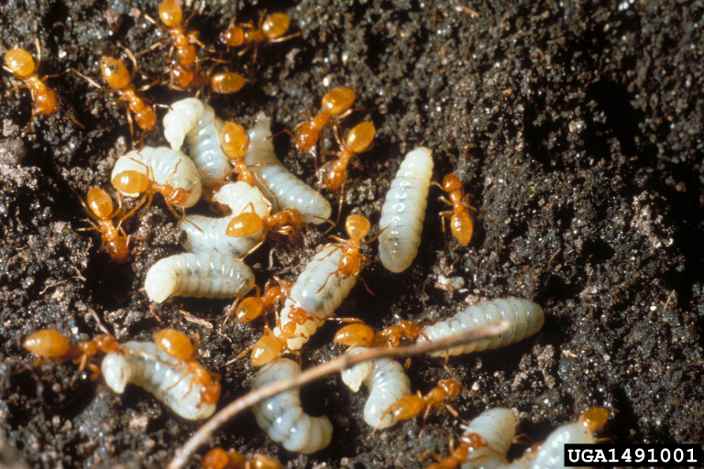Yellow Large Citronella Ants get their name from the citronella odor they emit when threatened or crushed. This ant is frequently confused with Termites when they swarm at multiple times during the year.
Habits
Citronella Ants are subterranean insects that feed on the honeydew of aphids and mealy bugs. The workers will give off a citronella-like odor when alarmed. Winged forms (or reproductives – known as swarmers) may appear at any time during the year. Swarmers are harmless, but they may be the first indication of an infestation if they are found in the home. They may enter the home through expansion cracks in slabs or door openings.
Habitat
Outdoors, Citronella Ants nest underground in and under dead and decaying wood – logs, tree stumps, dead tree limbs, and hollow tree cavities; beneath rocks, concrete slabs and landscape timbers; under porches; open woods, pastures, gardens, and lawns; and they can be found next to house foundations under the mulch. A nest is easy to identify as there will be mounds of soil from the excavated dirt. Indoors they can be found under slab flooring and in crawlspaces.
Threats
Relatively harmless, Citronella Ants emit an odor when threatened. Considered only nuisance pests – they usually go unnoticed unless they swarm in and around a home or when the mounds of dirt they excavate when building their nests continue to pop back up after having been removed. They cannot reproduce indoors, nor will they attack stored goods or structures.
Prevention
Seal any cracks or crevices around the home and utility lines. Repair any damaged wood in windows, door frames, porches, and eaves. Store woodpiles away from the house or garage. Trim shrubs/trees away from the home. Seal expansion cracks in slabs and seal around door openings. |

